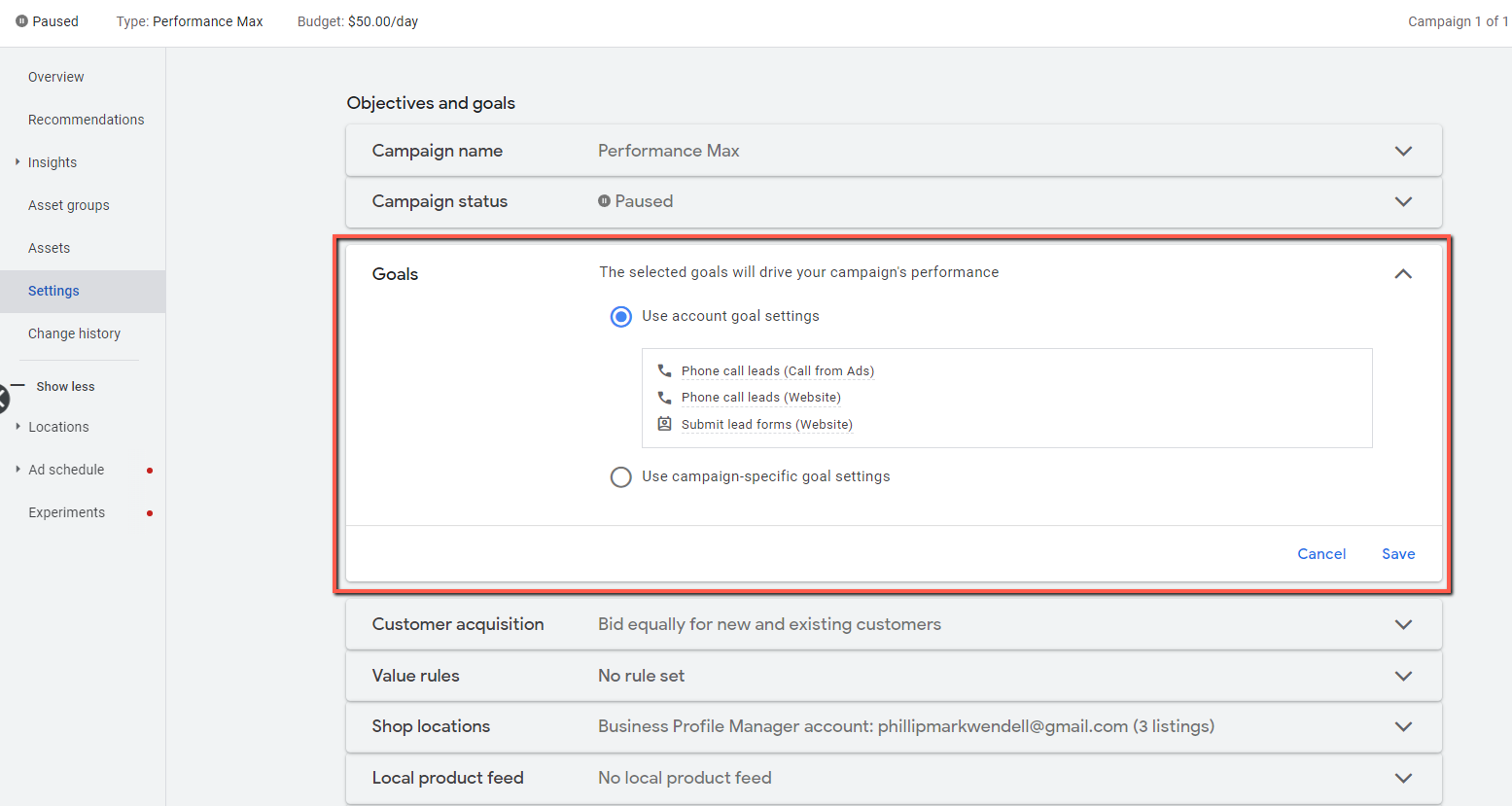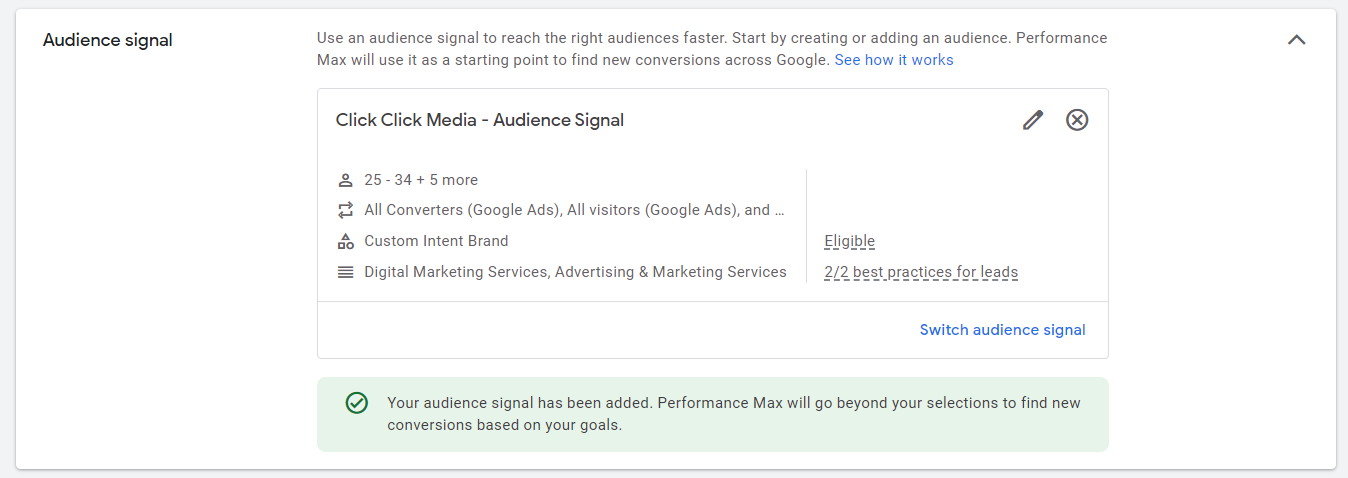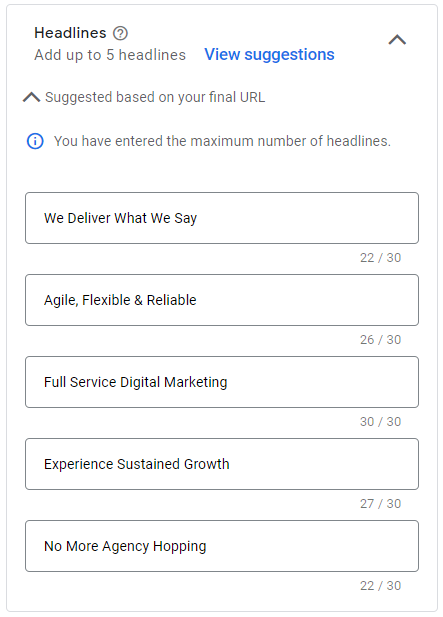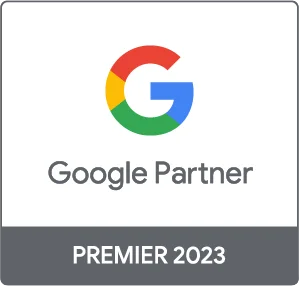Google Performance Max: The Most Common Problems Advertisers Face and How to Overcome Them

Google Performance Max campaigns are a powerful tool for any website or ecommerce store, but unfortunately, at Click Click Media we find that 90% of businesses running Performance Max are not seeing the full benefits of this powerful campaign type. In this article, we will highlight the most common problems advertisers face when running Google Performance Max campaigns, and provide tips on how to overcome these challenges.
What is Google Performance Max?
Performance Max is a campaign type offered in Google Ads that leverages AI and automation to run a single campaign across Google’s entire ad inventory. This includes:
- Google’s search engine
- Google’s display network
- Youtube
- Google shopping
- Gmail
- Google Maps
These campaigns offer performance in alignment with the goals you set for them, and compliment your search campaigns by providing much deeper reach and intelligence powered by Google’s machine learning. One of the key benefits of Google Performance Max campaigns is their ability to reach a wide audience across multiple platforms, but this can also be a challenge. With this powerful new campaign type, there is often a lack of transparency in data, which can lead to confusion for advertisers when they don’t see the expected performance.
1. Not Having Clear Goals and Objectives for Your Google Performance Max Campaign
As Google Performance Max campaigns leverage AI and automation to achieve results, it is important to be very clear about what the campaign goals are. Without clear goals, it can be difficult for the AI to effectively optimize the campaign. Defining specific and measurable goals, such as increasing website traffic or boosting sales, will help guide the optimization process and ensure that the campaign is successful.
You can use your account level goal settings or set up campaign-specific goals. Regardless of which method you choose, you must make sure to review the goals you are selecting make sense for this campaign.

2. Not Adding the Correct Targeting to Your Google Performance Max Campaigns
A performance max campaign is only as good as the data you provide it. This includes providing a strong audience signal made up of strong first party data that resembles your customer base. Generally, we find that using lists comprised of website visitors, converters and customer emails combined with branded search custom segments perform well.

3. Incorrect Conversion Tracking and Attribution
Google Performance Max campaigns rely on accurate conversion tracking and attribution to measure the success of the campaign and optimize for future success. Incorrectly set up tracking and attribution can lead to misleading results and a lack of insight into what is driving conversions. It is important to carefully set up and test conversion tracking to ensure that it is accurately measuring the desired actions.
4. Incorrectly Optimized Feeds
If you are running an ecommerce store, it is important to have your data feeds completely optimized. This includes ensuring that all product information, such as titles, descriptions, and prices, is accurate and up to date. Common errors we see in data feeds include incorrect product categories, missing information, and formatting issues. These errors can lead to poor performance and a negative user experience.
5. Poor Ad Copy
As you are creating your ad, Google provides a responsive ad strength score that changes as you provide your headlines & descriptions. The score ranges from poor-average-good-excellent and you must try to aim for a score of excellent as much as possible.
Some tips for strong ad copy in Performance Max campaigns include:
- Mentioning your brand or converting keywords in headlines
- Adding a headline that is only 15 characters long so that your ad fits in more placements
- Stay away from repeating what you have already said in other headlines
- Use compelling language
- Having clear call to actions
It is also important to consider the user’s perspective and create ad copy that addresses their needs and pain points. By crafting ad copy that resonates with the audience, you can increase the chances of a successful campaign.

6. Insufficient Assets
In addition to writing strong ad copy for a performance campaign, you must provide a good amount of image and video assets as well in order for it to perform well. The more images & videos you can provide to reach a excellent ad strength, the better.
Images that showcase what you are selling whilst also being eye catching and compelling are the best images to use.
A short video highlighting your product in action that’s no longer than 30 seconds is also recommended.
7. Ineffective Landing Pages
Landing pages are an important part of any advertising campaign, and this is especially true for Performance Max campaigns. It is essential that landing pages are relevant to the ad and meet the user’s expectations. On mobile devices, in particular, it is important to ensure that the landing page is easy to navigate and has a clear call to action.
In addition to being relevant and easy to use, landing pages should also be optimized for conversions. This includes using compelling headlines and persuasive language, including social proof and testimonials, and having a clear and prominent call to action. By creating effective landing pages, you can increase the chances of converting visitors into customers.
8. Lack of Analysis and Testing
Testing your campaigns with different targets, ad copy, and landing pages is one of the best ways to discover performance improvements. Regularly reviewing, analyzing, and split testing campaigns can help you get the most out of these campaigns (and the platform as a whole).
If you find your performance max campaign isn’t doing well or if performance has stagnated or dropped, it’s worth looking into reviewing your ad copy, audience signal and product feed rather than turning the campaign off completely.
It can be almost impossible for a business owner to keep up to date with all the developments and best practices for optimizing Google Ads campaigns. It is often best to seek the help of an expert, especially at the early stages of setting up a Google Performance Max campaign. This can help ensure that the campaign is set up correctly and has the best chance of success.
For assistance with your Google Performance Max campaigns, feel free to reach out to us at Click Click Media. We have a team of experienced professionals who can help you get the most out of your Performance Max campaigns and drive success for your business.
Conclusion
Google Performance Max campaigns are a powerful tool for reaching a wide audience across multiple platforms and achieving your business goals. However, without careful planning and optimization, these campaigns can underperform and fail to deliver the desired results.
By following best practices and addressing common issues such as unclear goals, incorrect targeting, and poor ad copy, you can overcome the challenges of running Google Performance Max campaigns and see success. Regular analysis and testing, as well as staying up to date with the latest practices, can also help you optimize your campaigns and drive better results.
If you are struggling with your Google Performance Max campaigns, don’t hesitate to seek the help of an expert. At Click Click Media, we have a team of experienced professionals who can help you get the most out of your Performance Max campaigns and drive success for your business. Contact us today to learn more.

 Google Ads
Google Ads Search Engine Optimisation
Search Engine Optimisation Website Development
Website Development Landing Pages
Landing Pages Digital Marketing Strategy
Digital Marketing Strategy Wordpress Development
Wordpress Development Facebook Advertising
Facebook Advertising Conversion Rate Optimisation
Conversion Rate Optimisation Design
Design Ecommerce
Ecommerce















